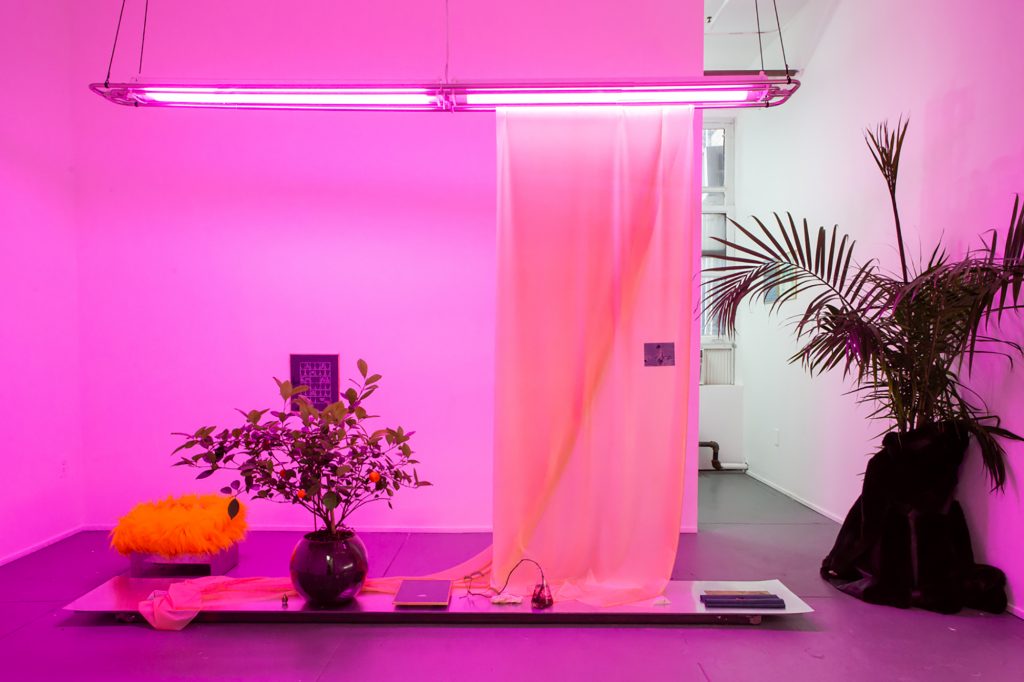Gagosian Director Antwaun Sargent’s Stunning “Social Works” Exhibition
A group show with work by 12 Black artists who’ve contributed to social change in public and private spaces

Channeling an urgent conceptual power that parallels his last two books (The New Black Vanguard and Young, Gifted and Black: A New Generation of Artists), while incorporating an immersive flair that art enthusiasts today have come to savor, author and critic Antwaun Sargent‘s debut exhibition at Gagosian, Social Works, delivers an engaging discourse on Black artists and the myriad spaces they influence. With community engagement as a prerequisite, the ambitious 12-artist group show succeeds in moments both intimate and grand, surprising and palpable—across sculpture, photography, painting and more.
Within the multi-room space, Sargent creates thematic moments to appreciate, participate and ponder. The artist roster includes many beloved names, as well as emerging talent with works just as thought-provoking and wondrous—from David Adjaye and Carrie Mae Weems to Rick Lowe, Titus Kaphar and Alexandria Smith.

One work epitomizes Sargent’s vision. Affixed to a ceiling light source in a rear gallery space, Linda Goode Bryant’s dynamic installation stretches toward the floor and incorporates video work as well as living produce. “Linda Goode Bryant started the first Black gallery in a major gallery district in New York in the 1970s. It was called Just Above Midtown and she showed David Hammons, Senga Nengudi and Suzanne Jackson, among others,” Sargent shares with us, as we walk through the room featuring the verdant, organic piece. The video work is projected onto the solid side of the structure. It references the profound impact of Bryant’s gallery. “The projection is really an exploration of her time in the art world over the last five decades,” Sargent says. “It’s about her artists and their relationship to their community, too.”
The other side of the towering installation reveals plant beds and a hydroponic system. This harks back to Bryant’s other influential work. In 2009, “Linda started Project EATS, which is a community garden platform,” Sargent continues. “They have 13 urban farms around the city that provide fresh produce to under-resourced communities. That’s what is happening on the other side of the installation—produce is grown, harvested and then clipped onto the wall. It’s free for visitors to take.”

Bryant’s large-scale work isn’t unmatched in scope and scale. In fact, Theaster Gates‘ installation—an ode to DJ Frankie Knuckles, aka the Godfather of House Music—incorporates more than 5,000 records and a working DJ booth. The comprehensive work, made in collaboration with Gates’ South Side Chicago-based Rebuild Foundation, exudes an electric, invitational energy.
Sharing this room, architect David Adjaye‘s first-ever large-scale autonomous sculpture invites guests to wander within. Composed of rammed earth and limestone, the structure references the soil of New York State while nodding to Adjaye’s interest in the work of architects from West Africa. It’s a staggering site-specific vision.

Sargent brings everything to life in a thoughtful, nuanced way and his understanding of space allows artists’ dialogues to flourish—between works, with visitors and even with the venue itself. “Gagosian has some of the best galleries in the world,” he says. “I’ve always loved visiting 555 West 24th, it has so much space to work with. Sometimes that can be intimating, but I embraced that, since this is essentially a show about the way that artists use space—institutional space, communal space, their own space.”

Of his curatorial process, he explains, “I was thinking about artists and their engagement with community. It was all very organic.” Sargent has long professional relationships with many of the artists in the show. He complemented their work with some from artists that he observed were already thinking about community in unexplored ways. “I shared this idea with all of the artists, and then we went with it,” he adds.
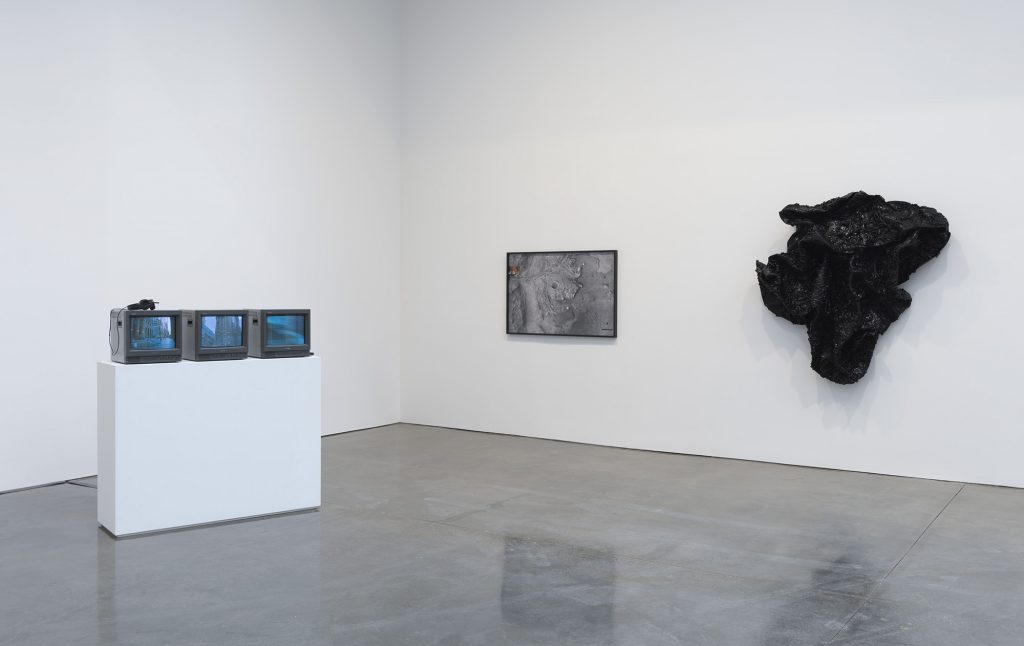
Gagosian provided the resources necessary to explore the biggest ideas (like an operational urban farming mechanism). This is evident, walking from room to room. It lends the exhibition sensations both larger than life and grounded, empowering and dreamlike.
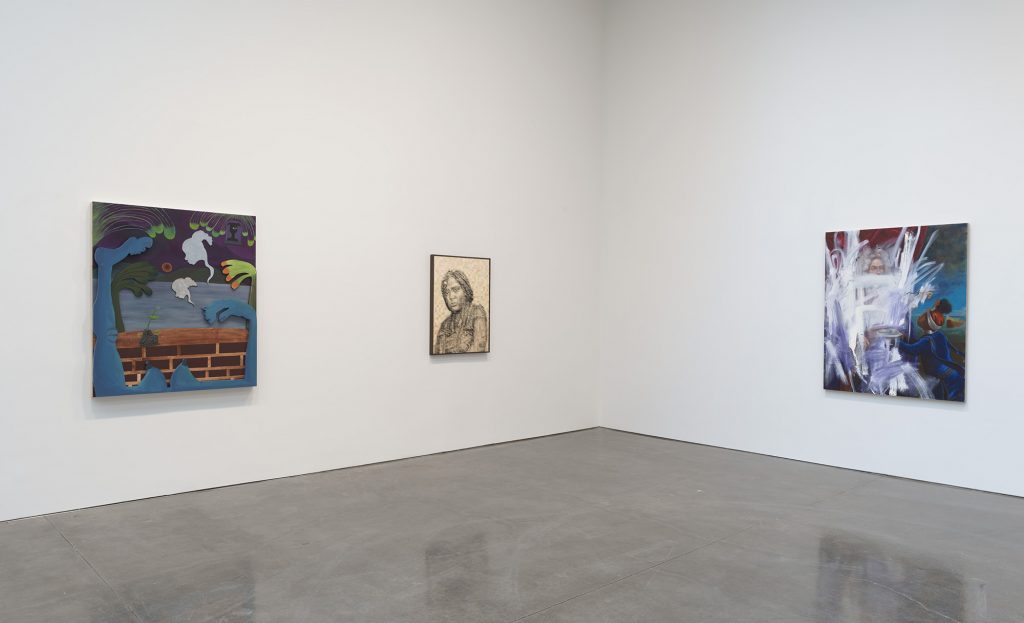
“I’ve been doing this work for 10 years,” Sargent adds. “I knew what I wanted to do. Pressure came from the execution. We had an 11-day installation period. Logistically, that was a challenge.” Especially, of course, considering that Adjaye’s work weighs several tons.
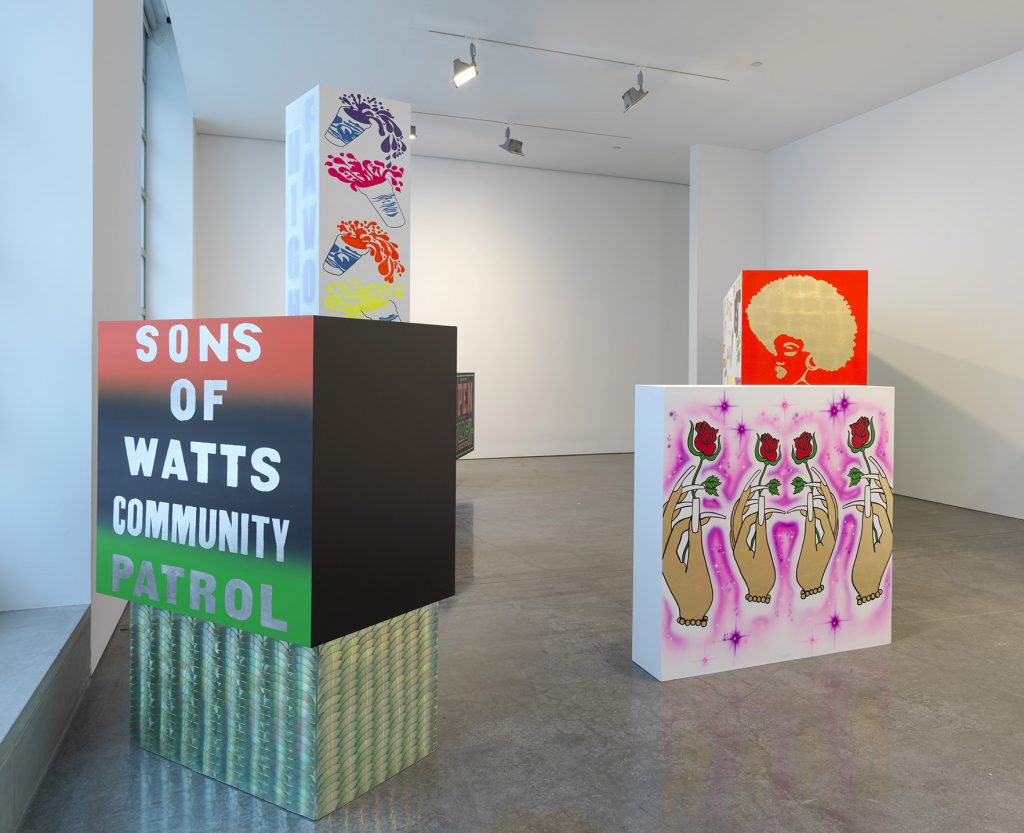
Layered, colorful and conceptual works from LA-based artist Lauren Halsey populate a room of their own. Sargent notes that she was “thinking about her community through these box paintings, which have signs that are taken from historically Black communities or feature advertisements that have been inscribed upon the community.” Alone, each sculptural painting speaks; when viewed together, they harmonize a vantage point of community.
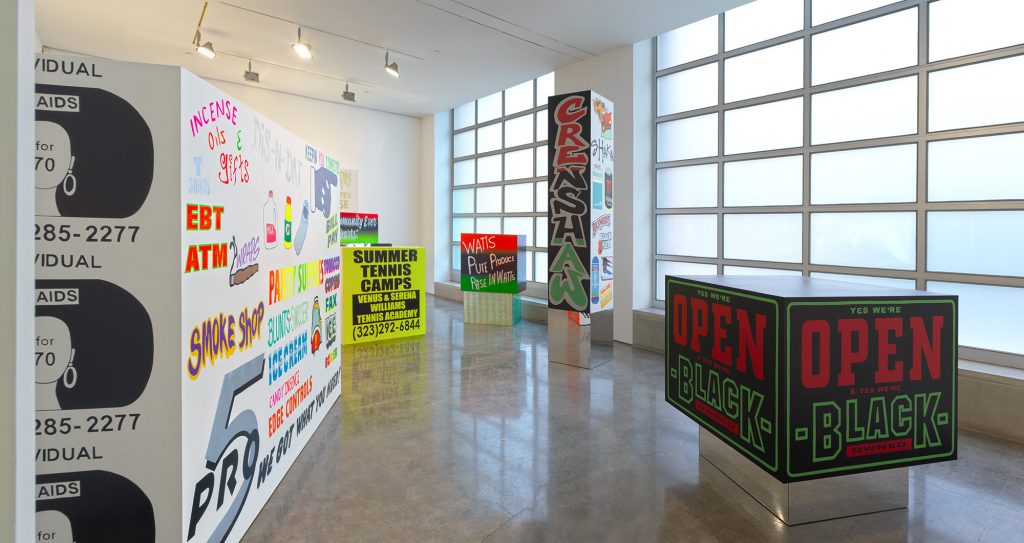
“It’s important to remember that these artists are rooted in a lineage of social practice that has gone on since the 1970s with Linda, to Lauren Halsey today,” Sargents concludes. The artists’ active engagement with their communities led to social change. Often, their art was a social act. Sargent honors this. His exhibition unites these efforts. And, in doing so, he himself has created something that everyone should see.
Hero image of Theaster Gates’ “A Song for Frankie,” (2017-2021), 5,000 records, DJ booth and record player. Variable Dimensions. © Theaster Gates Photo: Robert McKeever, Courtesy Gagosian


